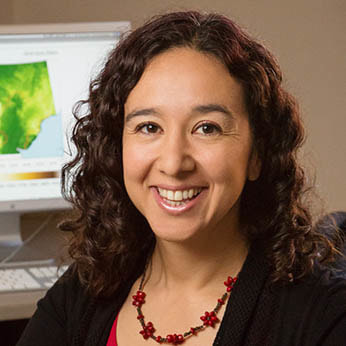As a hydroclimatologist, I see ecohydrology through the lens of land-atmosphere interactions. My focus is on understanding how ecosystems mediate the transfer of water/energy/momentum from the surface and subsurface to the overlying atmosphere. I mainly see these interactions at the very large scales (regional to continental).
What are your undergraduate and graduate degrees in?
My undergraduate and graduate degrees are in Civil and Environmental Engineering. I did a Postdoc in Hydrology and have been faculty in Atmospheric Sciences since 2009.
How did you arrive at working in/thinking about ecohydrology?
My PhD thesis focused on precipitation recycling, or the contribution of evapotranspiration within a region to its own precipitation. Ecosystems play a critical role in this, because through transpiration plants affect the time and spatial scale of precipitation recycling. I have been thinking of the role of ecosystems on the overlying atmosphere ever since. Now I have broadened my focus, and in addition to precipitation recycling I try to understand how ecosystem variability affects the overlying atmosphere by changing the thermodynamics and dynamics of the atmospheric system - from the local to the global scale.
What do you see as an important emerging area of ecohydrology?
The impacts of land-use and land-cover change on the hydroclimate of a region (from the subsurface to the atmosphere). I know this is really not a new area, but I don’t think we have really answered this question.
Do you have a favorite ecohydrology paper? Describe/explain.
My new favorite paper is: “Hydrologic regulation of plant rooting depth” in PNAS by Fan et al. 2017. This paper lays out a new paradigm for plant rooting depth based on soil moisture availability from both precipitation and groundwater. It provides a global map of plant rooting depth, based on both observations and numerical modeling. I am a big fan of the work of this group!
What do you do for fun (apart from ecohydrology)?
I dance! I used to be a contemporary dancer. Now, I don’t belong to a dance group, but I dance with my two girls all the time.

 RSS Feed
RSS Feed